Learning how to snowboard: Basic progression
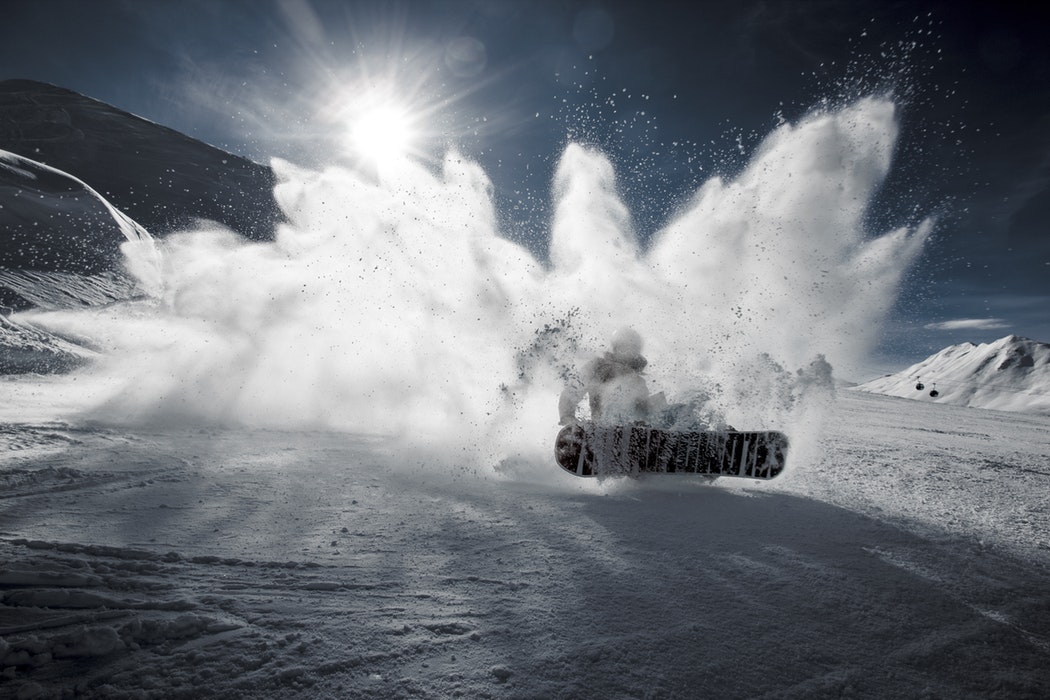
Snowboarding is hard by anyone’s standards. Sure, the snow may be soft most of the time, but the learning curve is anything but. If you’ve been learning to snowboard this year, you’ve probably had a year full of faceplants, catching edges, whiplash, and sliding backward in the wrong direction. If that sounds familiar, I’m here to help.
There are a number of steps you can take to make snowboarding easier at first. Sort of like putting training wheels on your bike. Once you can generally carve and stop, then there are still a lot of things you can practice that will help you learn faster.
Because even though it’s perfectly fun to slide down the mountain every which way and fall in the snow over and over, it’s infinitely more fun once you have control. When you can carve and jump and slash and slide. When you finally feel comfortable enough to go fast without catching the edge. At that point, the whole sport changes. That’s when you start progressing quickly and developing goals. That’s when you can start to learn tricks and explore new parts of the ski area off the groomed runs.
And although learning how to snowboard is hard enough on the slopes (believe me, I used to be a snowboard instructor), it’s even harder to do on paper. However, here is the perfect place for me to give you some tips and pointers on how to progress, exercises to try, and skills to master. Much of what holds people back when they’re learning to snowboard is that they don’t know how to learn it. So, today I’ll help you out.
Your neck, shoulders, hips, and toes
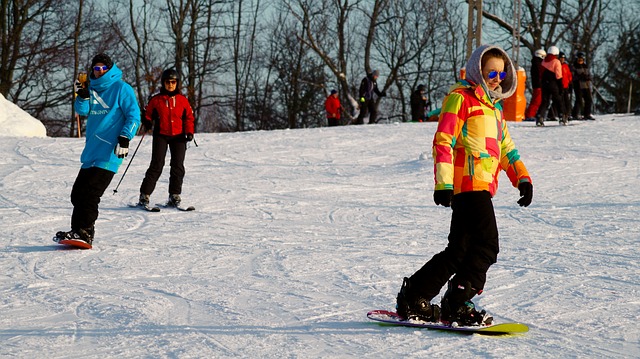
These four body parts are the foundation to nearly every turn, trick, and tumble you’ll ever make. If you aren’t already paying close attention to these four areas, it’s time to start. Each one has a specific job when you’re making a carve, coming to a stop, or setting up for a trick. It’s critical that you use them in the right order at the right times.
First, though, let’s talk about your stance. When you stand on your snowboard, you should be square, that means your torso (hips and shoulders) should be pointing straight at your toe edge. You shouldn’t be turning to face forwards. If you do, that’s why you catch your toe edge and faceplant so often.
The only part of your body that should be turned to face forwards is your neck. Try it out right now in your living room. Stand with your feet wide, like they were strapped in. Bend your knees a bit. Rest your hip and shoulders completely in line with your toes, facing what would be your toe edge. Then, turn your neck to look at your front foot. That’s your left if you’re regular and your right if you’re goofy.
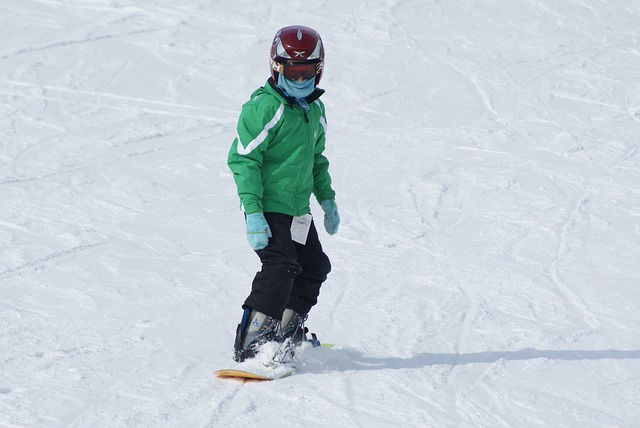
Do your shoulders turn at all when you do this? If so, that’s sending a slight twist down your entire spine. That, in turn, causes your toes to change pressure just a little bit to keep balance. Try it, turn your shoulders, and see if you can feel what your toes do to compensate. Just that tiny motion is enough to turn your snowboard.
Neck
Learning to control your neck independent of your shoulders is one of the most important parts of learning to control your snowboard when you’re just starting out. Standing beside a mirror while you practice turning your head can help you see if your shoulders turn as well.
Once you get the hang of it, you’ll be able to look around while you ride and not affect your edges. That’s how you look behind yourself to see where your buddies are. It’s how you wind up for a 360. It’s one of the most basic techniques in the sport. Learn to turn your head, without turning your shoulders.
Shoulders
Your shoulders are how most turns, spins, and stops are initiated. Like we’ve just talked about, when you turn your shoulders, it twists your spine. So, if you twist your shoulders to your heelside (I’m regular, so that’s left for me), it naturally lifts your left toes and puts your weight on your left heels.
Hips
When you do this, your hips will naturally turn with your shoulders. They are connected by your spine. It’s virtually impossible to move one without the other. That’s why it’s so important that you don’t move your shoulders when you move your neck.
Toes
As you twist heelside, you should feel that it’s easy to press down with your front heel and your back toes. Lift your front toes off the ground, as if you were initiating a heelside turn. Then, the tricky part is lifting your back toes afterward and balancing on your heels. On snow, that’s how you do a heelside turn.
You initiate the movement with your shoulders and twist your hips simultaneously. That causes you to lift your front toes up and start the turn. Once your board starts to turn, then you lift your back toes too. You only need to move your toes the littlest bit. Tiny motions make a big impact on your edges.
Your edges
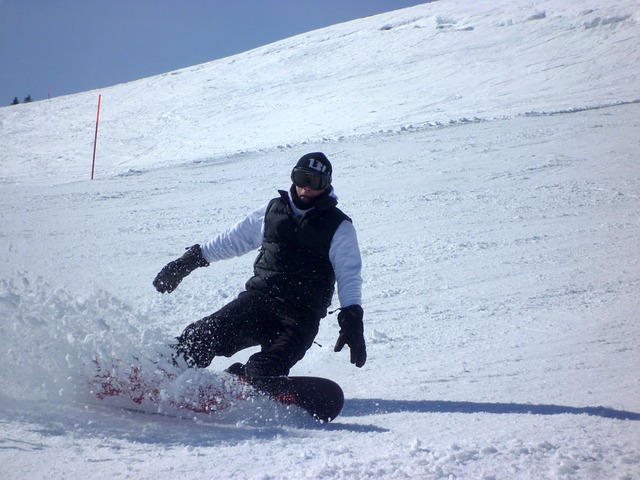
Your edges are how you control your board. They are also the reason why most beginners spend most of their first day face down in the snow. If you’re turning or sliding sideways, your downhill edge needs to be off the snow, and your uphill edges need to dig into it. This is true for carving, turning, and sliding to a stop.
Your knees
Why did I skip the knees when I was teaching you how to turn? Because you don’t use your knees to turn. If you’re thinking about your knees when you turn, it’s just confusing you. Let them do what is natural while you use the other body parts I mentioned. They’ll do their job just fine.
The only thing you need to do with your knees is to bend them more. I know, your legs are getting tired, but trust me, you need to bend your knees a little more. Especially when you carve or plow to a stop, bending your knees will help you keep your balance.
Stopping, carving, and control
Now, if you try the technique I’ve just described at low speed, you’ll probably wind up sliding sideways into more of a heel edge snowplow than a carve. It’s hard to get the hang of the difference at first. I still to this day, more than ten years later, remember how it felt to learn my first carves.
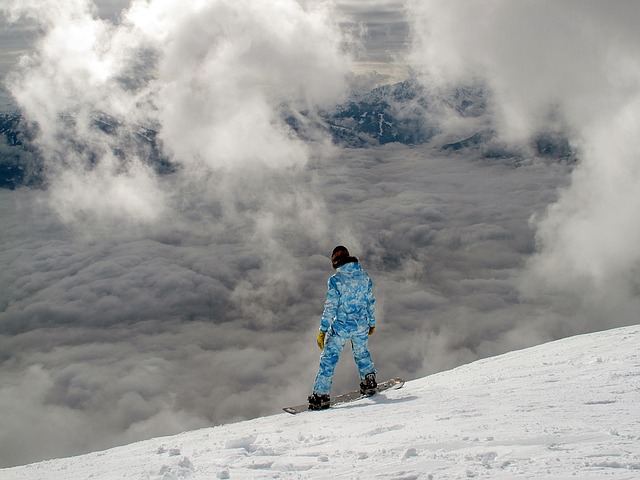
Switching back and forth between heel and toe edge is scary and difficult. It’s going to take some work, some bravery, and some falling. But always remember, your front toes shift first, then, once you’re past straight and starting to carve the other direction, your back toes follow suit.
Control will come slowly after you’ve learned to carve back and forth and switch to a stopping snowplow at any time. That’s when you’ll start to feel comfortable experimenting, going fast, and pushing the limits.
Intermediate techniques
After you can carve, and turn, and come to a stop reliably, what next? Well, believe me, you’re just getting started. Out of all of the different things, you could start working on though, I can think of three techniques that will come in the handiest.
First, learn to carve on slopes. When the hill banks left and right, it can really throw off your carving game. The technique you thought you’d mastered on the flat will suddenly feel foreign and scary again. Just play with leaning in a little harder or a little less. And remember to use your shoulders to help direct your turns.
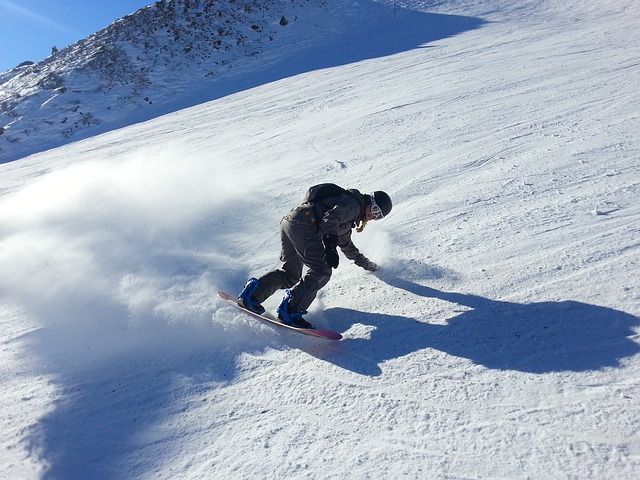
Then, learn to take that snowplow you use to stop and do it in an instant. If you learn to twist your hips into a sideways slide but keep your shoulders pointed downhill, you can quickly switch back to riding straight again. This is how you quickly cut speed without getting trapped going sideways. It’s also how you make sure you have the right amount of speed before you hit a jump or rail. Not to mention, it’s how you spray your friend with powder.
Third, learn how to switch back and forth between heel and toe plows quickly. This is done by jumping off your back foot and quickly pivoting your whole body, starting with your shoulders. Your front foot acts as a contact point while you disengage the rest of your board from the snow. This technique is how you navigate really steep terrain without picking up too much speed.
Advanced techniques
Once you have the hang of checking your speed, carving at all angles and are generally comfortable with your edges, it’s time to get tricky. Now you should start learning to ollie, to spin in circles, to ride switch, hit jumps, and to go fast.
First, the ollie is far more complicated than just jumping off of both feet at once. That’s just jumping, and it’s only really useful when you’re hitting jumps. An ollie is used when you’re going slower and want to get airborne without the help of a jump. It’s done by leaning back on your tail sharply to spring load it, and then jumping off your back foot just as the board snaps back at you. When done correctly, it will let you jump way higher than you could with leg power alone. Physics man, it’s no joke.
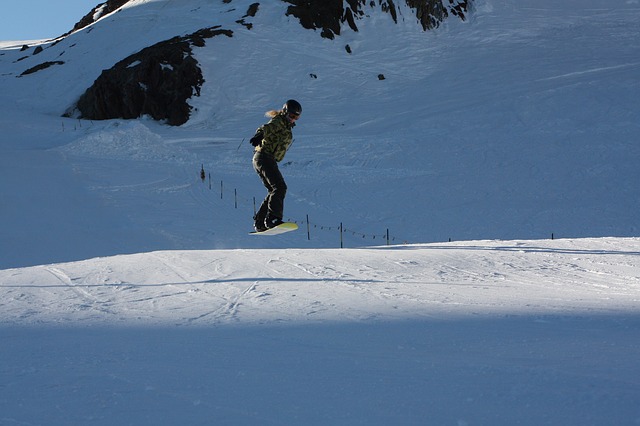
Spinning in circles and riding switch go hand in hand. I’m sure you’ve done it by accident plenty. But get used to spinning around, going switch and then continuing the spin around back to regular. All on the snow of course. Airborne 360s won’t come for a while yet. But learning to control your edges and control your body in a switch stance while you spin around will get you ready. Practice this at slow speeds on mellow terrain.
Then you should start picking up a bit of speed and jumping off of little features on the side of the run. Maybe steer clear of the terrain park for a while yet. No point hitting those jumps until you know what you’re doing. You’ll learn a lot more by hitting features with strange angles and poor lips. You’ll learn to time your ollie right at the peak, you’ll learn how much speed is right. And you’ll learn how to land on all sorts of landings. Just be careful not to jump off of anything stupid. Know your limit and stay within it.
Learning to snowboard in powder
Now, when it comes to riding powder, all the rules change. I could write an entire book about it. I learned to snowboard at Mt. Baker, which holds the world record for the most snowfall in a single season. We know powder.
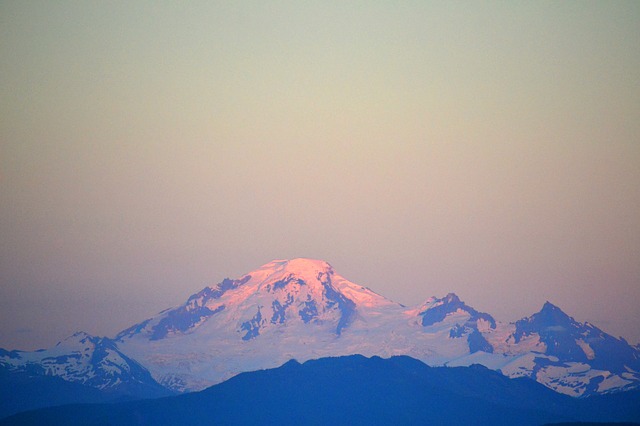
The thing is, in powder, instead of leading with your front foot, you need to shift your weight to your back foot so that your nose doesn’t dig in. Your board becomes like a scoop floating through the snow. Every motion must keep your nose up and out of the snow. You’ll still use your shoulders and hips in mostly the same ways, but it will all feel different.
The real secret to learning to ride powder is to pick steep slopes and go fast. It sucks to get stuck in powder, and if you try to hit a really mellow slope for your first time, you’ll get stuck too. Trust me, you’ll go slower in powder, every turn will slow you more, and if you fall, it will hardly hurt.
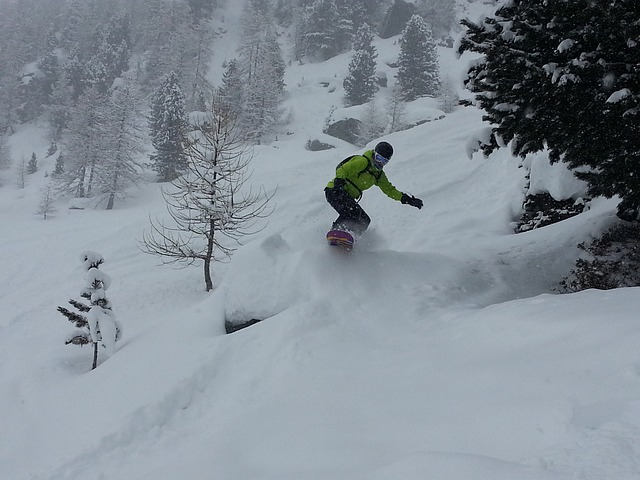
The best way to learn to ride powder is when it’s fresh, to hit a steep-ish slope (think blue runs) that goes in between two groomers. That way if you do fall and get stuck, you won’t have far to go before you’re out of it. And you can maintain your speed and practice a few carves. Just remember to lean back and keep your nose up.
The next steps
Once you’re riding powder and popping ollies. It’s time to hit some drops, learn some tricks and start playing with the big dogs. The most important thing to remember at this stage is the balance between risk and reward.
You’re not going to improve very quickly if you break your shoulder or dislocate your knee trying some gnarly cliff drop. Don’t jump on things you aren’t ready for. Find ways to build up new tricks with safe progressions. For example, go out with your friends and build a small, wide jump to try your first 360 off of. Pick a soft landing where you can learn the spin without the consequences of hitting ice if you fall.
Ride with other riders that are better than you. Ask them for tips and see if you can keep up. But don’t let it hurt your feelings if they ditch you. It’s no fun always to be waiting for that one guy. And believe me, we’ve all been that guy. Just keep riding, and you’ll get better. Even if you have to faceplant a few times along the way.
If you have any comments then please drop us a message on our Outdoor Revival Facebook page
If you have a good story to tell or blog let us know about it on our FB page, we’re also happy for article or review submissions, we’d love to hear from you.
We live in a beautiful world, get out there and enjoy it. Outdoor Revival – Reconnecting us all with the Outdoors.
